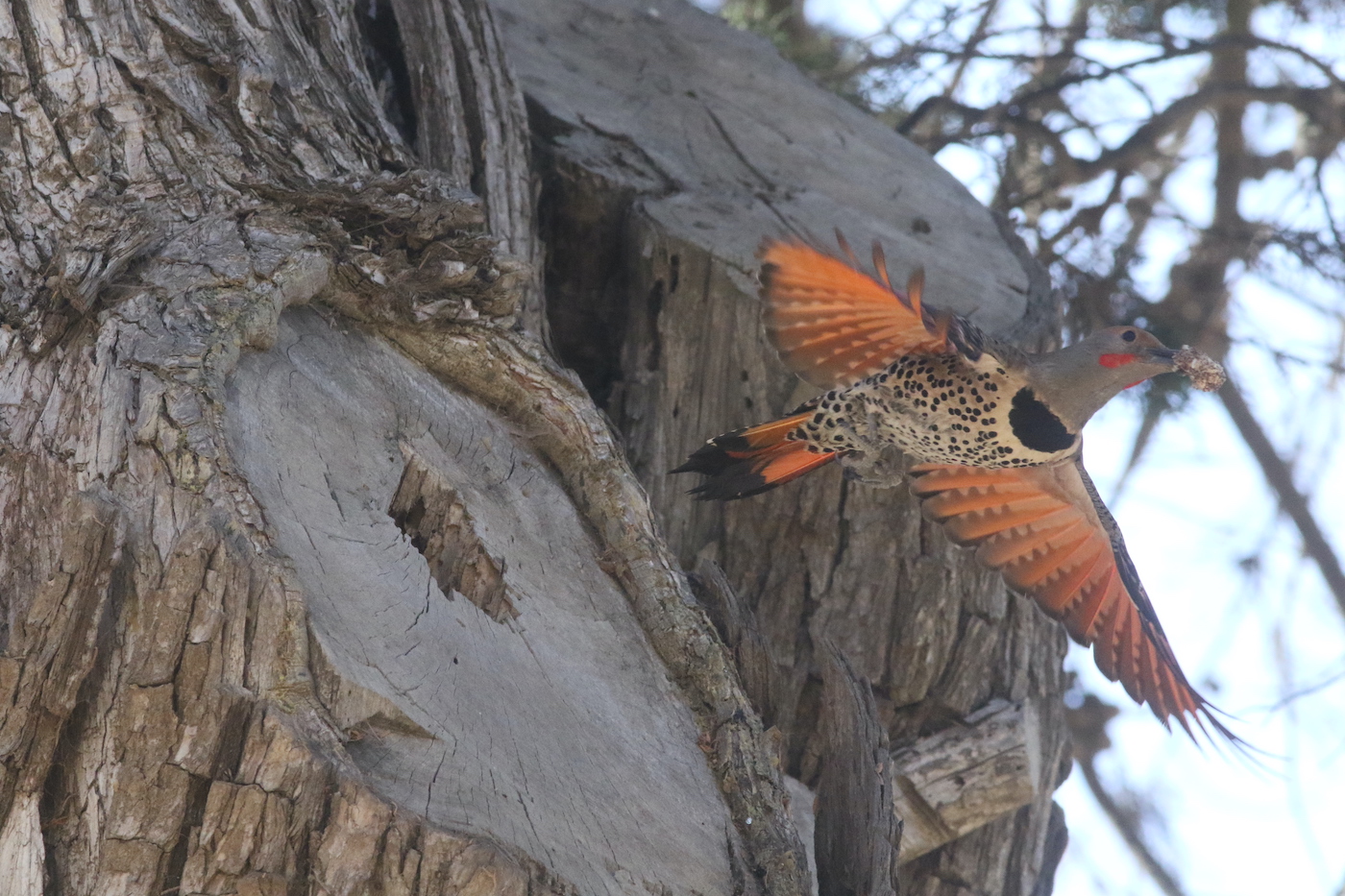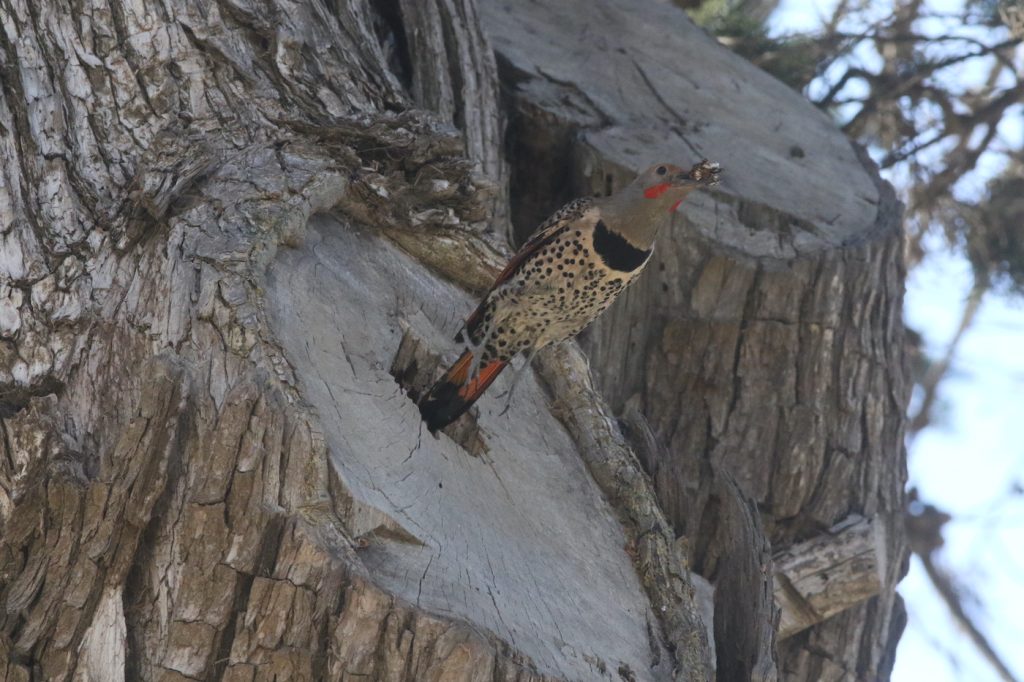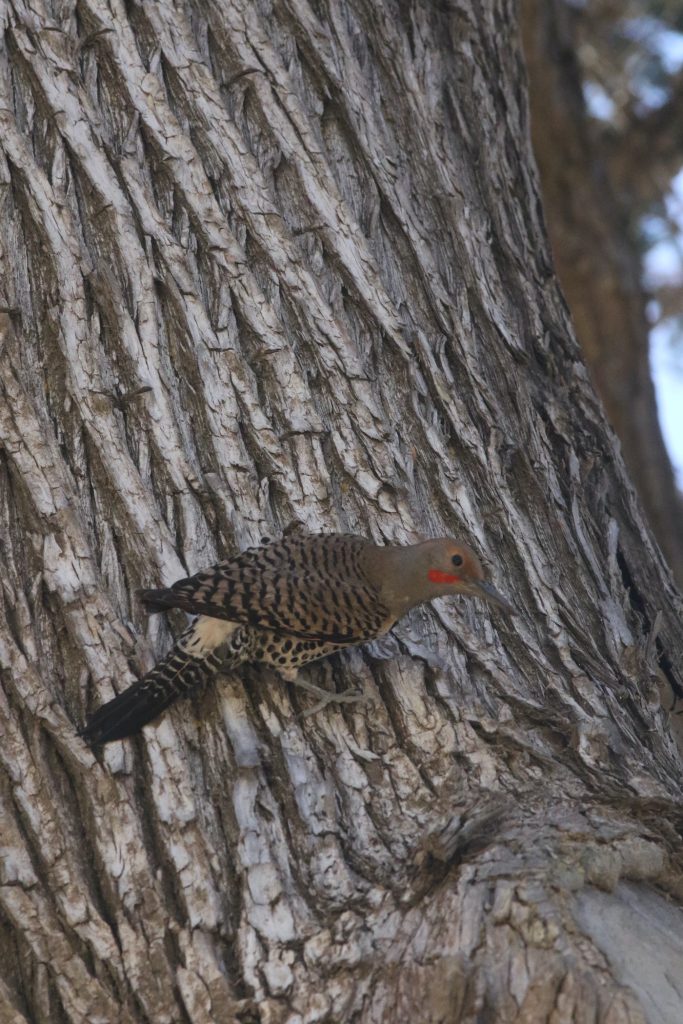Cypress Junction

First, it was their undeniable kyeer, kyeer. Then a blur of red and orange instantly diverted me toward their lofty refuge, 30 feet up the sturdy trunk of a Monterey cypress. Swooping to and from, the pair of northern flickers worked at a feverish pace readying their nest for their impending brood.
This cypress stands alone in Scorpion Canyon, a native tree to California, but a non-native to the California Channel Islands. It’s been a long-lasting remnant of the island’s ranching history, but there are several of them still standing across the windswept isle’s southeast fringe. Planted on the island around 100 years ago, it endures perpetual gale force winds standing the test of island time.
I’ve always loved camping beneath groves of Cypress trees, especially the dense groves of Tomales Bay in the Point Reyes National Seashore region 90 minutes north of San Francisco Bay. The needles are soft and after years of collecting on the forest floor, they make for a fine bed beneath the floor of my tent. They sound heavenly or even ghostly when blowing in the northwest winds that ravage the chain or Point Reyes. However, these sturdy trees make great nesting and foraging habitat for a throng of avian species.
Over the years this cypress tree in Scorpion Canyon has proven to be a hotspot for resident and migratory birds. Northern Channel Islands loggerhead shrike, red-breasted nuthatch, red-tailed hawk, Bewick’s wren, island scrub jay, yellow-rumped warbler, and many more all frequent this reliable, weathered cypress with island foxes trolling below.
Fleeting Flickers
Over the years it has been a challenge for me to photograph northern flickers. They’ve always proven to be skittish and wary of any approach. Although they mostly feed on the ground for insects, they seek refuge high up in the trees. They possess a distinctive call, but that has proven to be nothing more than a tease when it comes to finding them through my viewfinder. In the past there’s been moments of filling a frame only to have this bird in the woodpecker family quickly vanish within the dense island flora they thrive in.
A year ago, on this same cypress I saw and photographed a northern flicker feeding one of its fledglings. The adult was frantically pecking away at the bark on the cypress; insects and larvae were on the menu. The adult scoured the bark of insects and then turned to its fledgling, regurgitating the insects into the young flicker’s beak. There was no cover as I gradually approached the northern flickers. The parent, though, didn’t mind me approaching to within 25 feet. At the time, it was easily the best look I’ve ever had of northern flickers.
I photographed the parent and fledgling well past sunset, their voracious foraging showing no sign of slowing as shadows crept across Scorpion Canyon. A year later, and that same cypress is now proving to be a feeding ground, but also a home.
Swooping In

On the third week of May 2022, I saw a flicker fly into the cypress. There had been a lot of noise coming from a pair of flickers in Scorpion Canyon for the past two months. However, when I saw a female swoop into the cypress I ran over to investigate. Sure enough, there was a woody three-inch in diameter cavity on part of the trunk that had been cut away years prior. The newly discovered nest faced eastward. Before I knew it, the male with his characteristic red shaft on the sides of its face and the female took turns feeding their chicks and sitting on the nest, which only had enough room for one adult at a time.

As summer approached, I tried to keep it creative while looking for better angles of the nest. Besides shooting upward from the ground, I also used a ladder. That enabled me to sit about 10 feet east from the trunk. It also elevated me eight feet off the ground. I wasn’t level with their nest, but it was an advantage. Of course, sitting on top of a ladder exposed me to all those that couldn’t help themselves. What is that guy doing sitting on top of that ladder? Some folks walking to and from the campground were polite, quietly asking what I was doing, or what bird it was I was hoping to photograph. Others, unfortunately, had to yell from a distance the same questions, completely unaware that I was banking on stealth while waiting patiently for the northern flickers to congregate around their nest.
The elevated perch on the ladder gave me a great vantage point looking up and down the canyon and timing when the flickers would fly into their nest. And unlike the other birds living in the canyon, flickers like other woodpecker species fly in a swooping up and down fashion.
The cypress junction is a four-way intersection, so besides day-trippers and campers, there’s a lot of traffic with maintenance workers and rangers motoring to and from the pier, the campground, and ranger housing. So, I had to bank on those early mornings before the Island Packers ferry arrives, and late in the day after everyone leaves the island. It’s a calm the northern flickers enjoy, as do all the other birdlife hovering, roosting, and foraging around the steadfast cypress.
For seven to 10 days the flickers traded off on parenting duties. One would be inside the cavity with their brood of at least two chicks. When the other parent swooped in and they swapped out positions, the other parent would go look for more food. This exchange happened every five to 40 minutes. And when it occurred there was lots of chatter, a feeding frenzy as the young flickers gobbled up larvae.
It’s a Boy(s)
During the second week of June 2022, chatter had increased mightily, and I’d only been away for two days. I was fooled at first. The female flew in and fed her brood. After she regurgitated their meal, the dad flew in. This is where I got momentarily confused. The males have the characteristic bright red shafts on either side of their face. When the dad landed, he didn’t feed them. Me not being the best birder didn’t realize what I was looking at. Initially, I thought he was just checking in, but two heads popped out both with red shafts. That, and I didn’t realize the chicks were further along than I imagined.
When the dad returned, he had a beak-full of yummy larvae that they devoured, red shafts all around. So at least two of the brood were males, growing quickly, hungry, and soon to fledge, which I missed.
A two-week rafting trip beginning from mid-June to first of July on the North Slope of the Brooks Range in Northeastern Alaska beckoned. The Arctic National Wildlife Refuge is the largest wildlife refuge in North America. The Kongakut River braids all the way to the Arctic Ocean, but that’s another story for another day.





